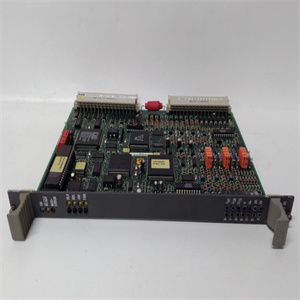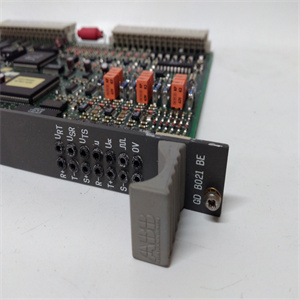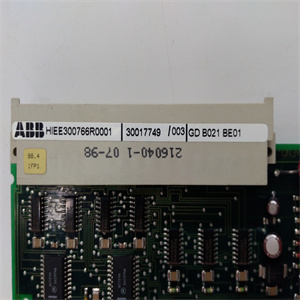产品展示
联系我们
联系人:麦女士
手机:+86 15270269218
电话:
Q Q:3136378118
邮箱:stodcdcs@gmail.com
地址:江西省九江市瑞昌市东益路23号赛湖农商城401号
DS3800XDIA
每相并联电缆的校正系数:大值
表2(TN系统)或表3(IT系统)中读取的保护长度应为
乘以以下系数:
n 2 3 4 5 6 7 8
kp 2 2.7 3 3.2 3.3 3 3.4 3.5
n是每相并联的导体数量
三相电压不同于400 V的校正系数:的值
表2(TN系统)或表3(IT系统)中读取的大保护长度
应乘以以下系数:
电压【V】230 400 440 500 690
kV 0.58 1 1.1 1.25 1.73
对于230 V单相系统,无需校正系数。
铝制电缆的修正系数:大保护值
表2(TN系统)或表3(IT系统)中读取的长度应乘以
以下因素:
kAl 0.64
保护导体横截面修正系数SPE不同
根据表1中规定的横截面:大保护长度的值应乘以对应于相位的系数
导体横截面和保护导体之间的比率(PE)
以及相位横截面:
SPE/S 0.5 0.55 0.6 0.66 0.75 0.87 1 1 1.25 1.5 2
S kPE
≤16 mm2 0.67 0.71 0.75 0.80 0.86 0.93 1.00 1.11 1.20 1.33
25 mm2 0.85 0.91 0.96 1.02 1.10 1.19 1.28 1.42 1.54 1.71
35 mm2 1.06 1.13 1.20 1.27 1.37 1.48 1.59 1.77 1.91 2.13
>35 mm2 1.00 1.06 1.13 1.2 1.29 1.39 1.5 1.67 1.8 2.00
IT系统中分布的中性点校正系数(仅适用于表3):
大保护长度值应乘以0.58。
464电气设备| ABB
5座光伏电站
光伏(PV)发电厂直接瞬时转换太阳能
在不使用任何燃料的情况下转化为电能。事实上,光伏(PV)技术利用了光电效应,通过光电效应
适当“掺杂”的半导体在暴露于太阳能时发电
辐射
光伏(PV)电站的主要优势可总结如下:
•必要时进行分布式发电;
•无污染材料排放;
•节约化石燃料;
•设备的可靠性,因为它们没有活动部件(使用寿命
通常超过20年);
•降低运营和维护成本;
•系统模块化(为了增加电厂功率,足以提高
面板数量)根据用户的实际要求。
然而,由于
从技术和经济角度来看尚未完全成熟的市场
观点。此外,由于可变性,发电不稳定
太阳能的能量。
光伏电站的年电力输出取决于不同的因素。
其中:
•安装现场的太阳辐射事件;
•面板的倾斜和方向;
•是否有阴影;
•电厂组件的技术性能(主要是模块和
逆变器)。
光伏电站的主要应用包括:
1.为与电网隔离的用户安装(带存储系统);
2、接入低压电网的用户装置;
3.太阳能光伏发电厂,通常连接到中压电网。
上网电价优惠仅适用于2类和3类应用,
额定功率不低于1 kW的电厂。
光伏发电厂基本上由发电机(光伏板)和
将面板安装在地面、建筑物或任何建筑物上的框架
结构,通过功率控制和调节系统,通过可能的能量
存储系统,通过配电盘和开关设备组件外壳
开关和保护设备以及连接电缆。



Correction factor for cable in parallel per phase: the value of the maximum protected length read in Table 2 (TN system) or Table 3 (IT system) shall be multiplied by the following factor: n 2 3 4 5 6 7 8 kp 2 2.7 3 3.2 3.3 3.4 3.5 n is the number of conductors in parallel per phase Correction factor for three-phase voltage different from 400 V: the value of the maximum protected length read in Table 2 (TN system) or Table 3 (IT system) shall be multiplied by the following factor: voltage [V] 230 400 440 500 690 kV 0.58 1 1.1 1.25 1.73 For 230 V single-phase systems, no correction factor is necessary. Correction factor for aluminium cables: the value of the maximum protected length read in Table 2 (TN system) or Table 3 (IT system) shall be multiplied by the following factor: kAl 0.64 Correction factor for protective conductor cross section SPE different from the cross sections stated in Table 1: the value of the maximum protected length shall be multiplied by the coefficient corresponding to the phase conductor cross section and to the ratio between the protective conductor (PE) and the phase cross sections: SPE/S 0.5 0.55 0.6 0.66 0.75 0.87 1 1.25 1.5 2 S kPE ≤16 mm2 0.67 0.71 0.75 0.80 0.86 0.93 1.00 1.11 1.20 1.33 25 mm2 0.85 0.91 0.96 1.02 1.10 1.19 1.28 1.42 1.54 1.71 35 mm2 1.06 1.13 1.20 1.27 1.37 1.48 1.59 1.77 1.91 2.13 >35 mm2 1.00 1.06 1.13 1.2 1.29 1.39 1.5 1.67 1.8 2.00 Correction factor for neutral distributed in IT systems (for Table 3 only): the value of the maximum protected length shall be multiplied by 0.58. 464 Electrical devices | ABB 5 Photovoltaic plants A photovoltaic (PV) plant transforms directly and instantaneously solar energy into electrical energy without using any fuels. As a matter of fact, the photovoltaic (PV) technology exploits the photoelectric effect, through which some semiconductors suitably “doped” generate electricity when exposed to solar radiation. The main advantages of photovoltaic (PV) plants can be summarized as follows: • distribuited generation where needed; • no emission of polluting materials; • saving of fossil fuels; • reliability of the plants since they do not have moving parts (useful life usually over 20 years); • reduced operating and maintenance costs; • system modularity (to increase the plant power it is sufficient to raise the number of panels) according to the real requirements of users. However, the initial cost for the development of a PV plant is quite high due to a market which has not reached its full maturity from a technical and economical point of view. Moreover the generation of power is erratic due to the variability of the solar energy source. The annual electrical power output of a PV plant depends on different factors. Among them: • solar radiation incident on the installation site; • inclination and orientation of the panels; • presence or not of shading; • technical performances of the plant components (mainly modules and inverters). The main applications of PV plants are: 1.installations (with storage systems) for users isolated from the grid; 2. installations for users connected to the LV grid; 3.solar PV power plants, usually connected to the MV grid. Feed-in Tariff incentives are granted only for the applications of type 2 and 3, in plants with rated power not lower than 1 kW. A PV plant is essentially constituted by a generator (PV panels), by a supporting frame to mount the panels on the ground, on a building or on any building structure, by a system for power control and conditioning, by a possible energy storage system, by electrical switchboards and switchgear assemblies housing the switching and protection equipment and by the connection cables.
相关产品










